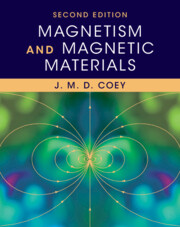Refine listing
Actions for selected content:
1299955 results in Books

Pointing
- Culture, Development, and Evolution
- Coming soon
-
- Expected online publication date:
- March 2026
- Print publication:
- 31 March 2026
-
- Book
- Export citation

Random Vibrations
- A Primer
- Coming soon
-
- Expected online publication date:
- March 2026
- Print publication:
- 31 May 2026
-
- Textbook
- Export citation
The Coveted Mount
- The Horse in South Asian History
- Coming soon
-
- Expected online publication date:
- March 2026
- Print publication:
- 31 March 2026
-
- Book
- Export citation
Knowledge/Nation
- The Humanities and the Social Sciences in Postcolonial India
- Coming soon
-
- Expected online publication date:
- March 2026
- Print publication:
- 01 May 2027
-
- Book
- Export citation

Sex, Genes and Chromosomes
- Their Discovery, Function and Evolution
- Coming soon
-
- Expected online publication date:
- March 2026
- Print publication:
- 31 March 2026
-
- Book
- Export citation
Design, Production and After-lives
- Three Godrej Objects and the History of Modern India
- Coming soon
-
- Expected online publication date:
- March 2026
- Print publication:
- 01 May 2027
-
- Book
- Export citation
Development and the Tribal Question in India
- Contours, Context, and Contestations
- Coming soon
-
- Expected online publication date:
- March 2026
- Print publication:
- 01 May 2027
-
- Book
- Export citation

Antitrust and Competition Policy
- A New Foundation
- Coming soon
-
- Expected online publication date:
- March 2026
- Print publication:
- 31 March 2026
-
- Book
- Export citation

Sikh Ethics
- Coming soon
-
- Expected online publication date:
- March 2026
- Print publication:
- 31 March 2026
-
- Element
- Export citation
Transmission Lines
- Equivalent Circuits, Electromagnetic Theory, and Photons
- Coming soon
-
- Expected online publication date:
- March 2026
- Print publication:
- 31 March 2026
-
- Book
- Export citation

Art, Nature, and the Body in Early Medieval Britain and Ireland
- Coming soon
-
- Expected online publication date:
- March 2026
- Print publication:
- 31 March 2026
-
- Book
- Export citation
People For Oil
- Citizen Mobilization in the U.S. and Canadian Fossil Fuel Industries
- Coming soon
-
- Expected online publication date:
- March 2026
- Print publication:
- 31 March 2026
-
- Book
- Export citation

Magnetism and Magnetic Materials
- Coming soon
-
- Expected online publication date:
- March 2026
- Print publication:
- 28 February 2026
-
- Book
- Export citation

Constructions, Networks and Linguistic Change
- Coming soon
-
- Expected online publication date:
- March 2026
- Print publication:
- 28 February 2026
-
- Element
- Export citation

Extremal Graph and Hypergraph Theory
- With Ramsey Theory
- Coming soon
-
- Expected online publication date:
- March 2026
- Print publication:
- 28 February 2026
-
- Book
- Export citation

The Cambridge Companion to Florence B. Price
- Coming soon
-
- Expected online publication date:
- March 2026
- Print publication:
- 31 March 2026
-
- Book
- Export citation

The Cambridge Guide to World Theatre History
- Coming soon
-
- Expected online publication date:
- March 2026
- Print publication:
- 31 March 2026
-
- Book
- Export citation

Latin Poetry Across Languages
- Adventures in Allusion, Translation and Classical Tradition
- Coming soon
-
- Expected online publication date:
- March 2026
- Print publication:
- 31 March 2026
-
- Book
- Export citation
Feeling Modern European Imperial Architecture
- Coming soon
-
- Expected online publication date:
- March 2026
- Print publication:
- 01 May 2027
-
- Element
- Export citation

Cormorant
- A Cultural History of Greed and Prejudice
- Coming soon
-
- Expected online publication date:
- March 2026
- Print publication:
- 02 April 2026
-
- Book
- Export citation
